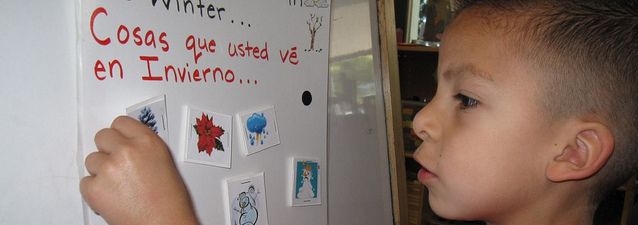Reading
Professional Development Session
Format: Mixed model, 2 hour interactive session; Prior to the session: read selected state publication pages, articles, PowerPoint and handouts. View World Full of Language section “Moving Toward Literacy” on streaming video. During the session, through discussion and group work, participants will review the key early literacy skills and small groups will develop connect specific activities to the strategies described in the “Moving Toward Literacy” video.
Early literacy in the preschool classroom is based on strong oral language abilities, knowledge of how print works, phonological awareness, and a personal desire to become a skilled reader. Six critical elements have been identified as key for English learners as they move toward literacy in English: appreciation and enjoyment of reading and literature, increased understanding of book reading, understanding of print conventions, awareness that print carries meaning, progress in English alphabet knowledge, and phonological awareness. It is important to remember that children who are English learners may have already learned some of these early literacy skills in their home language. To fully understand each child’s literacy development, program staff will need to determine which skills the children have mastered in their home language and appropriate strategies for building upon this foundational knowledge to develop proficiency in English. Attention to bridging of the home language and English, strategic use of the home language, and connecting content to preschool English learners’ cultural knowledge will help foster their motivation to learn the specific literacy skills addressed in the English language development foundations (PCF, p. 206). Prior to the session, participants will read selections from state publications, access and read the articles and handouts, and view the PowerPoints and streaming videos. During the interactive session, participants will discuss classroom environments, materials, and planned activities to support the development of early literacy skills.







